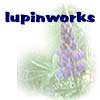SnippetsSome Critical Incidents[ Journal Entry ] A number of things caught my attention while I was reading your reflections that I want to share. Claire shared a wonderful incident regarding taking her grade ones to the park. She describes how Brandan and Adam ask for a push and how she announces “I don’t push.” As she explains
So she didn’t push them, although she did show them what to do and offered lots of encouragement. Another child had been on the monkey bars and had wanted to be lifted off. Again, Claire explained “I don’t lift kids off the bars.” Another “park” rule, as she put it. She then thinks about Katelyn and her writing. Katelyn has just begun putting her thoughts on paper. Claire had helped her “edit” a piece and had attempted to have Katelyn flesh her latest story out a bit. She got nowhere herself so suggested Katelyn ask Amy to read it, hoping Amy might persuade her to include more details. No luck; Katelyn insists “I don’t wan to do that.” Claire wonders about the two episodes.
Yes, we all PUSH. What was interesting for me was Claire’s analysis that one of the pressures affecting her are the parents’ and other teachers’ expectations about what counts as acceptable ‘instruction.’ It had been reading Linda Darling-Hammond’s piece that offered her this “Conroy” moment. Beth explored her feelings of disorientation.
Her comment promptly put me in touch with a piece written by Michael Coghlan—“A Belief System Under Siege.” In it he describes
Part of our activity is intended to help you discover what your action-theory (as Donald Schön and Chris Argyris refer to it) is. Until we can name the metaphors we live by we can’t do much to change them. So a big part of any teacher/action research agenda is to use critical incidents, or whatever other evidence we’re gathering, to help us describe our action beliefs. As Mike Coghlan discovered, he didn’t need to jettison his entire scaffolding. He was able to reconfigure his edifice, using old bricks for new purposes. Beth, too, will find the same thing. Rhonda related a powerful critical incident involving her horse (no name!). She described a training session with a visiting clinician. It didn’t go well for the horse. The clinician was too aggressive—at one point the horse attempted to bolt. Tethered, however, she reared and then fell back unable to recover her footing, so she hurt herself quite badly. Rhonda reflects
This is a wonderful instance of a non-school situation turning our gaze on our work. Critical incidents don’t happen only in the classroom or the school. Lots of what goes on in our lives can afford us reflective moments. Often they help us see the tensions with new eyes. Nan explored her learning during a computer workshop.
We’ve talked about this in class a bit—how observing ourselves learning can offer import insight into our students’ behaviour and help us think about teaching that supports learning as opposed to teaching that interferes. One last sharing for today. Kim raised a critical tension she is coping with.
What Kim’s really addressing are her feelings of guilt about not meeting external expectations. One of the objectives of engaging in teacher/action research is to strengthen our professional knowledge so that we’re in a position to explain and argue for what we do. Some A teacher/action research stance allows us to enter the professional discourse and to amass evidence that strengthens our understanding of what we’re attempting to do. In the end, the ‘permission’ Kim seeks will have to come from within; she has to read widely to become familiar with the debates in the professional literature at the same time as she gathers evidence from her work which allows her to see what’s really going on, what’s allowing her students to connect, and what isn’t. That’s what teacher/action research is all about. |
|
© Copyright 2001-2009, . All rights reserved. |

